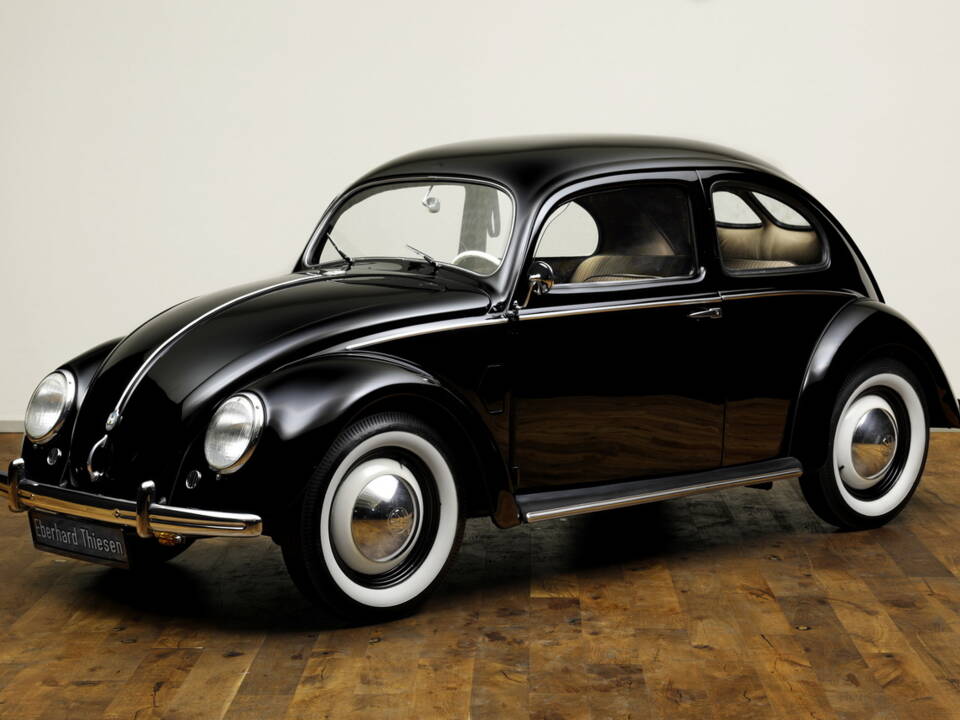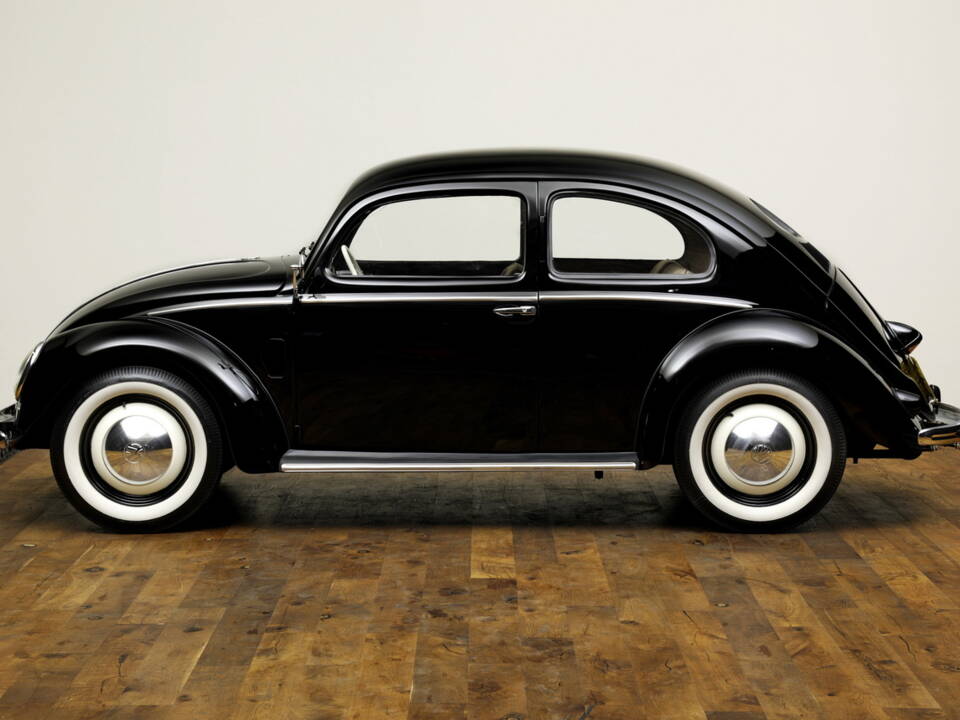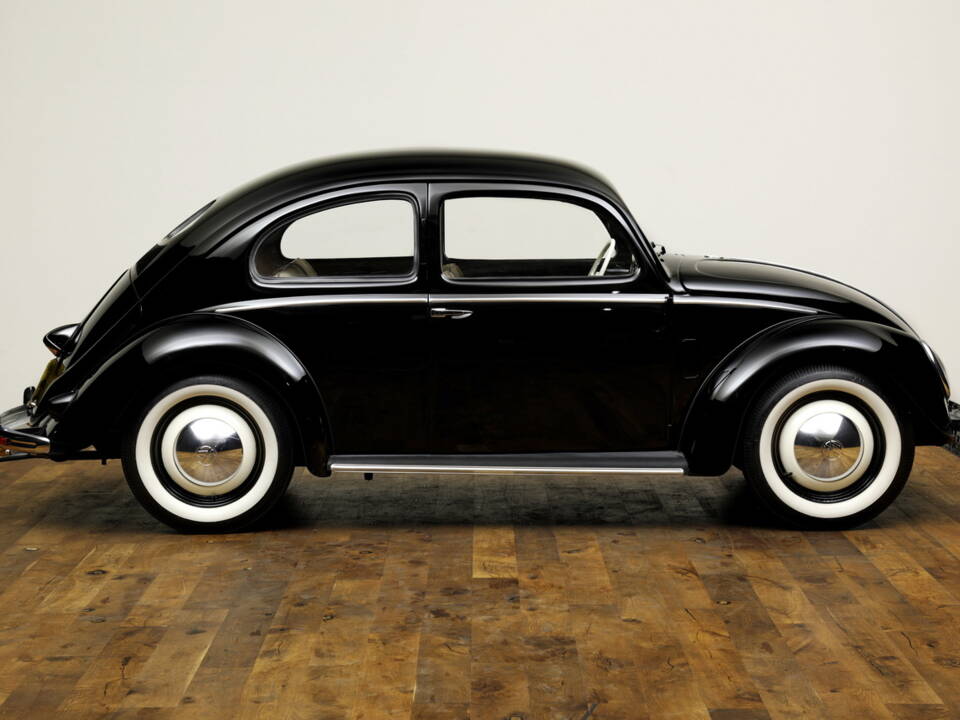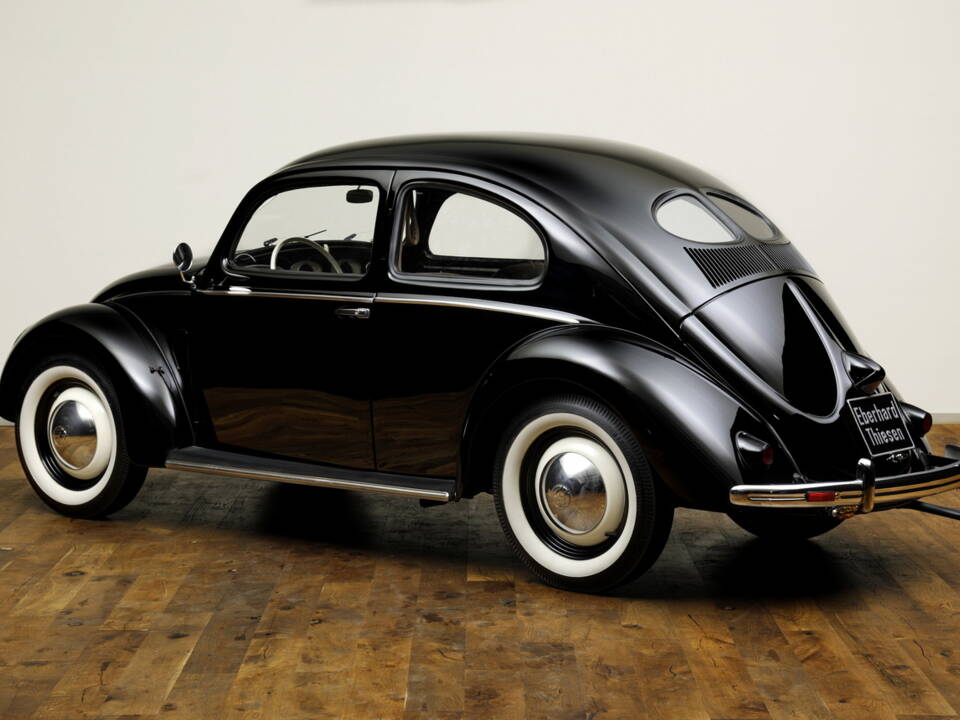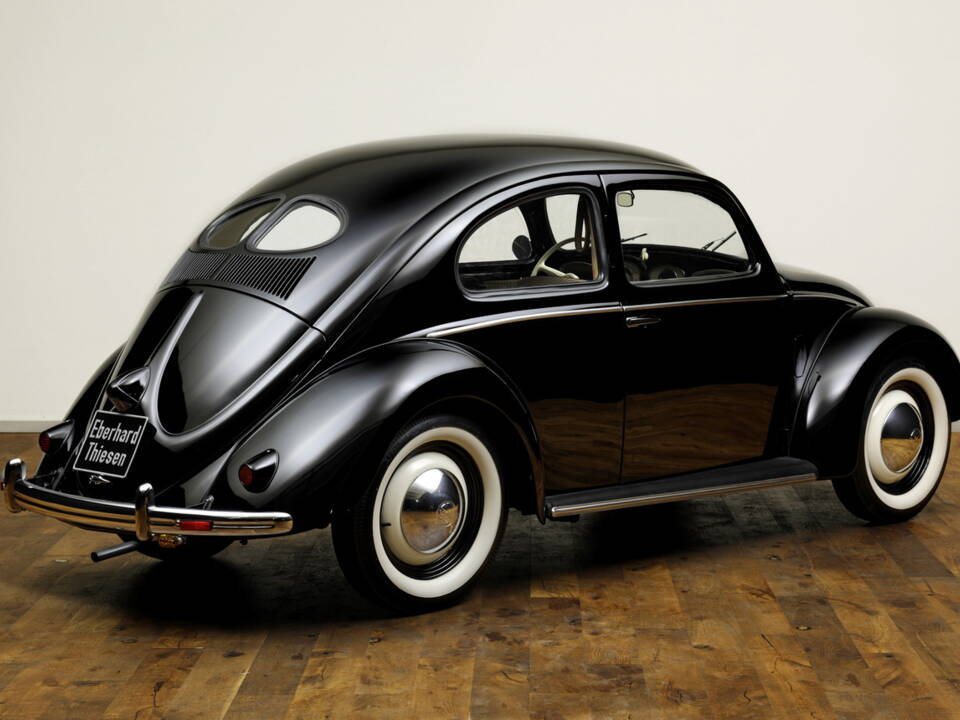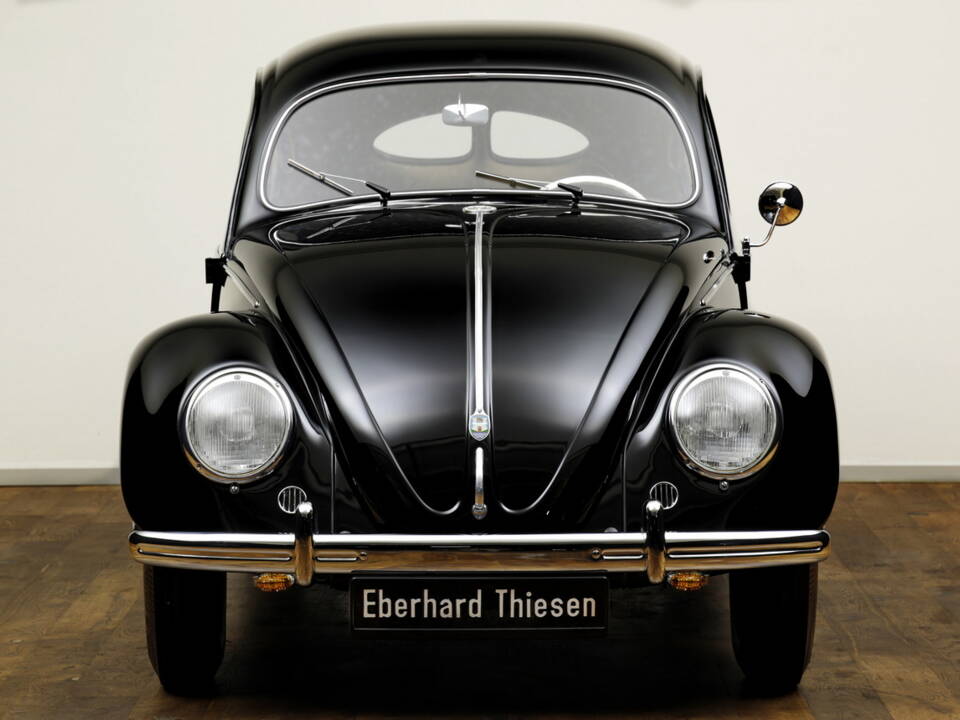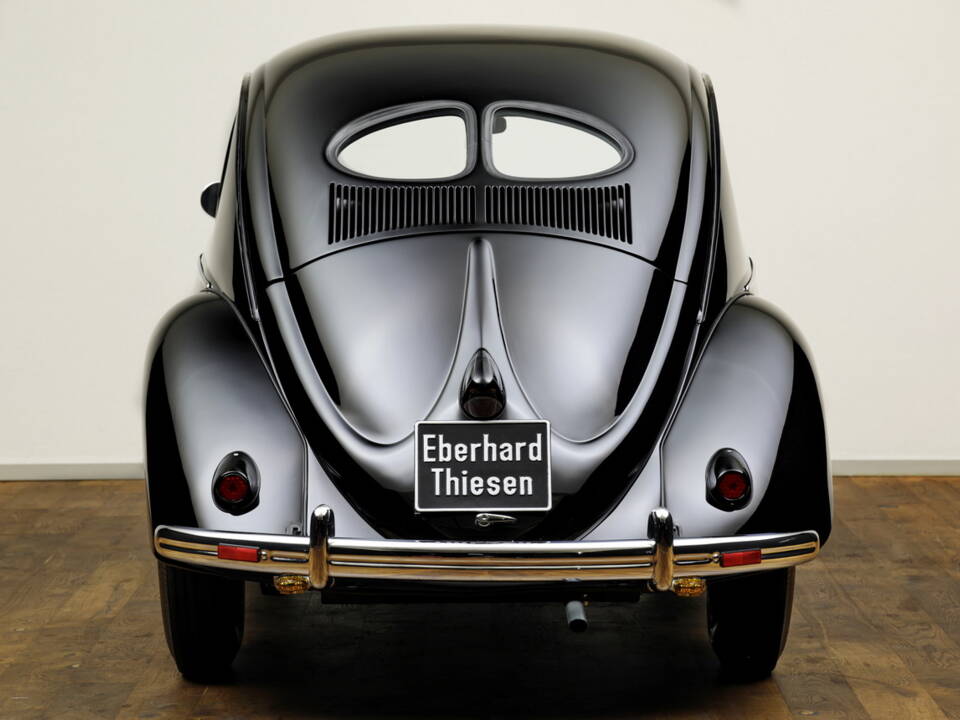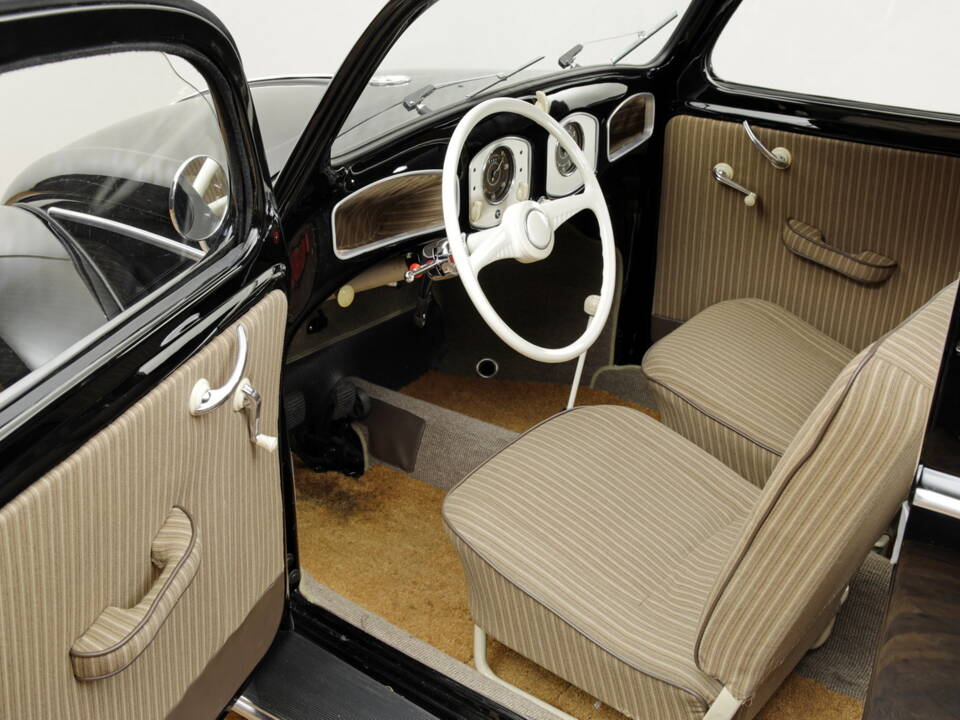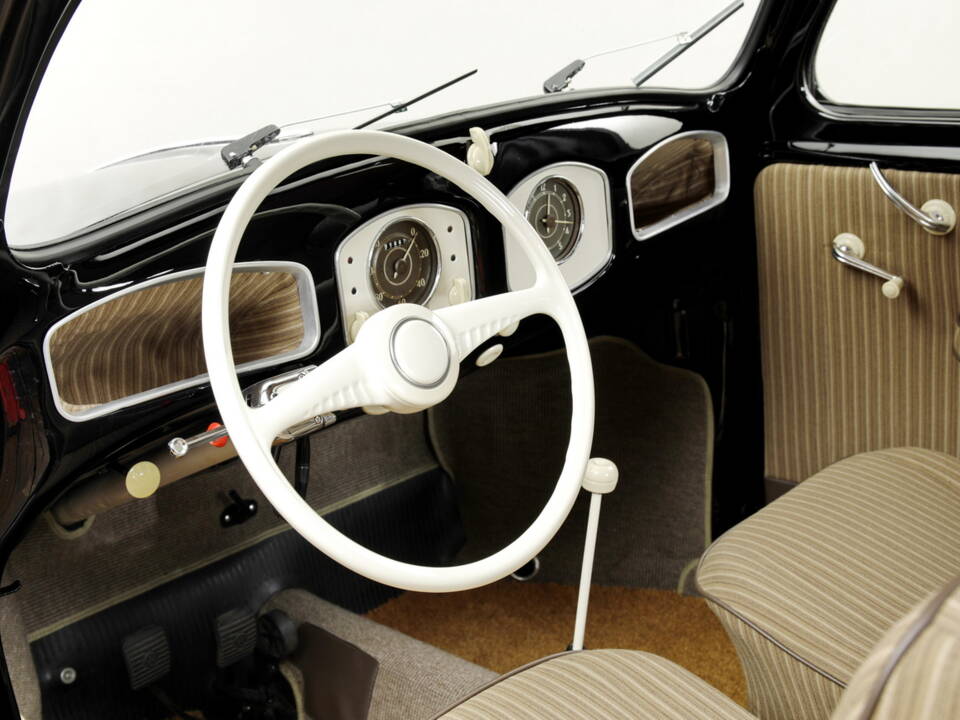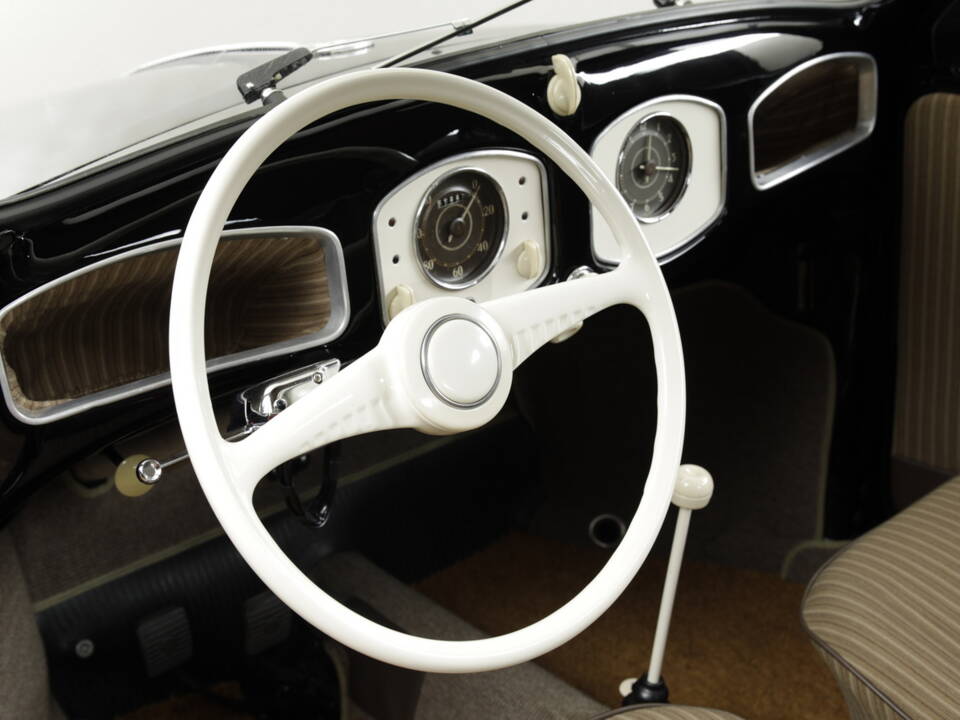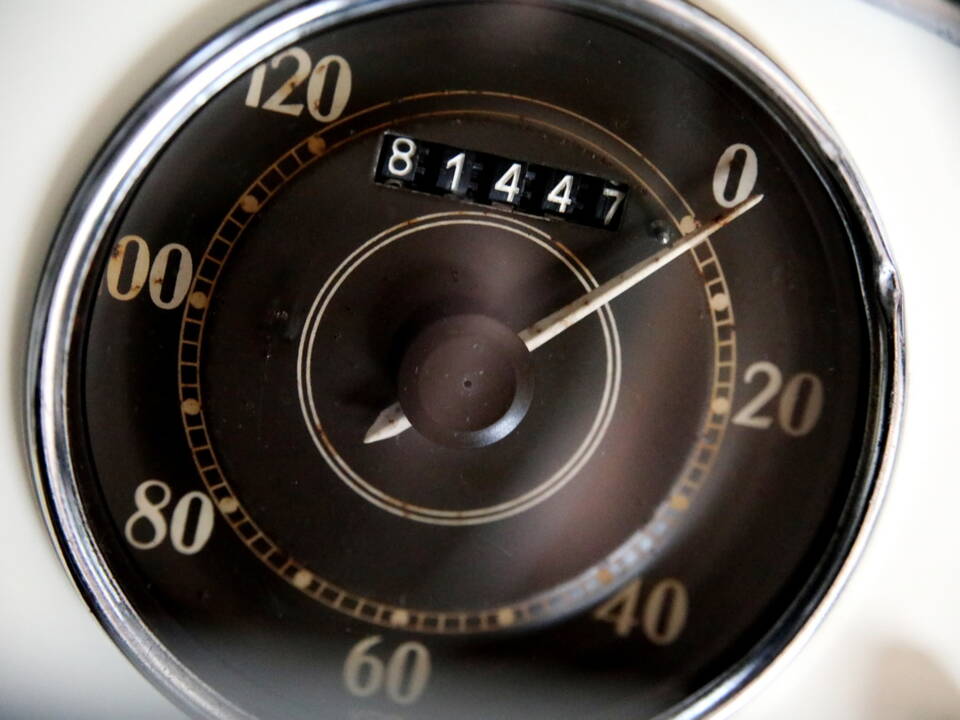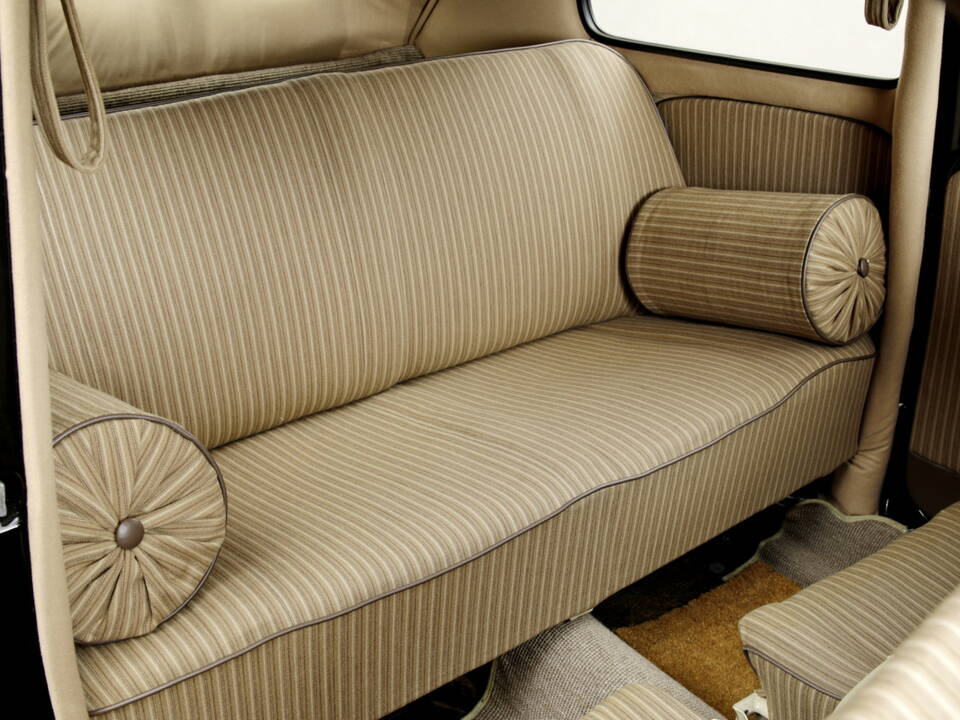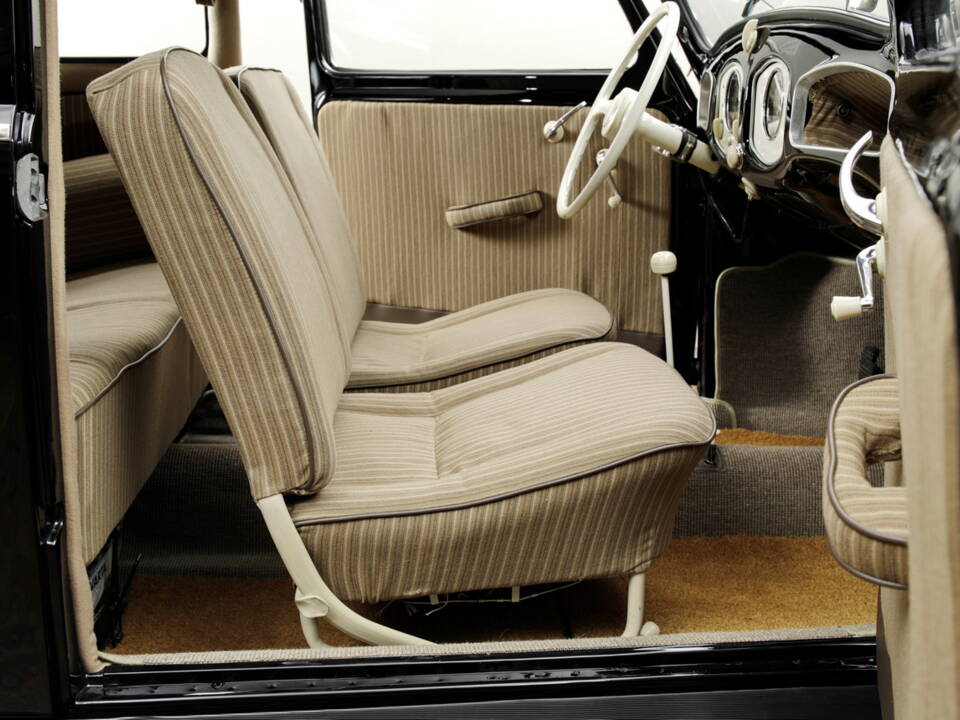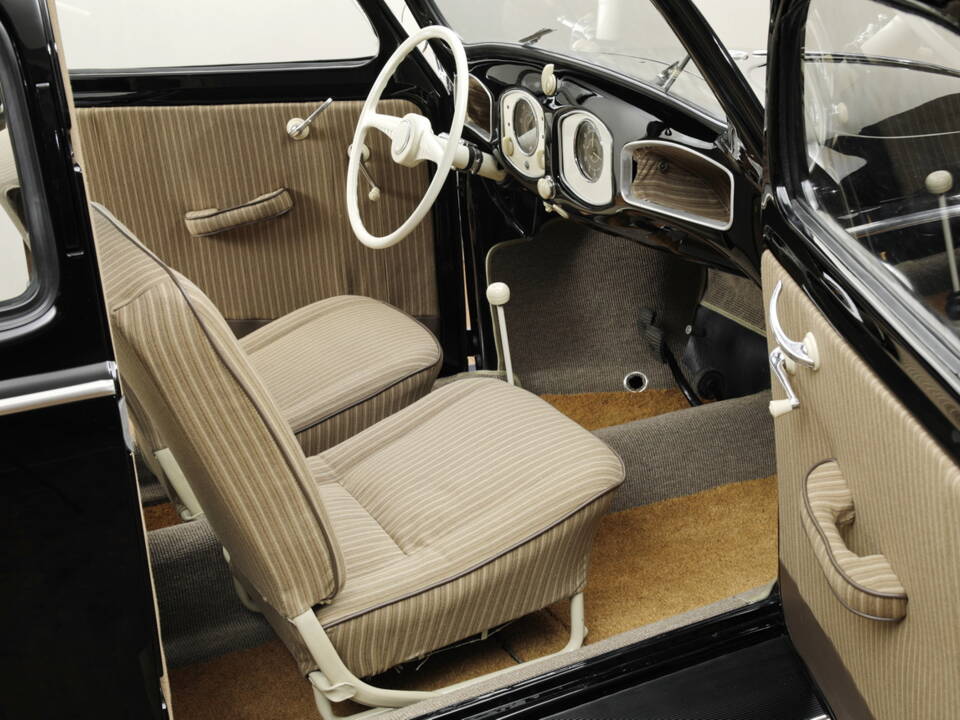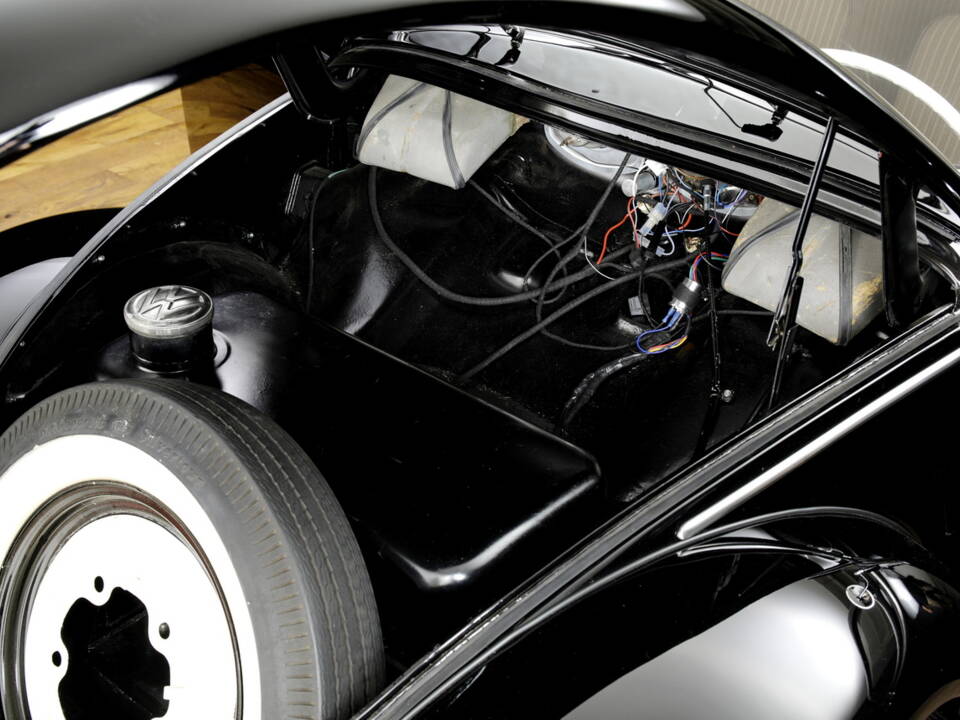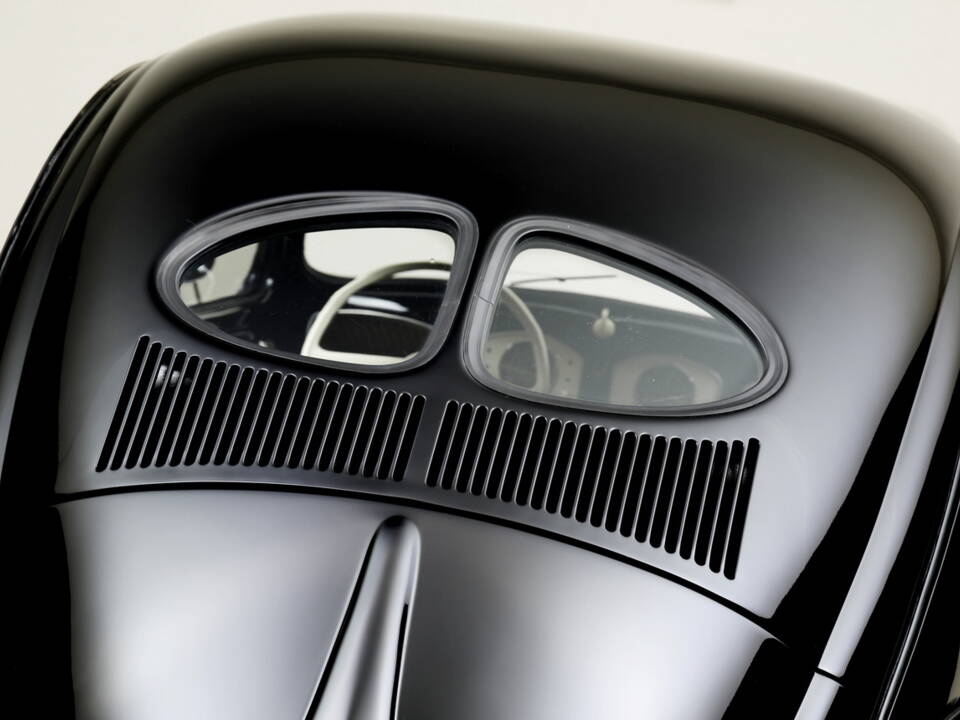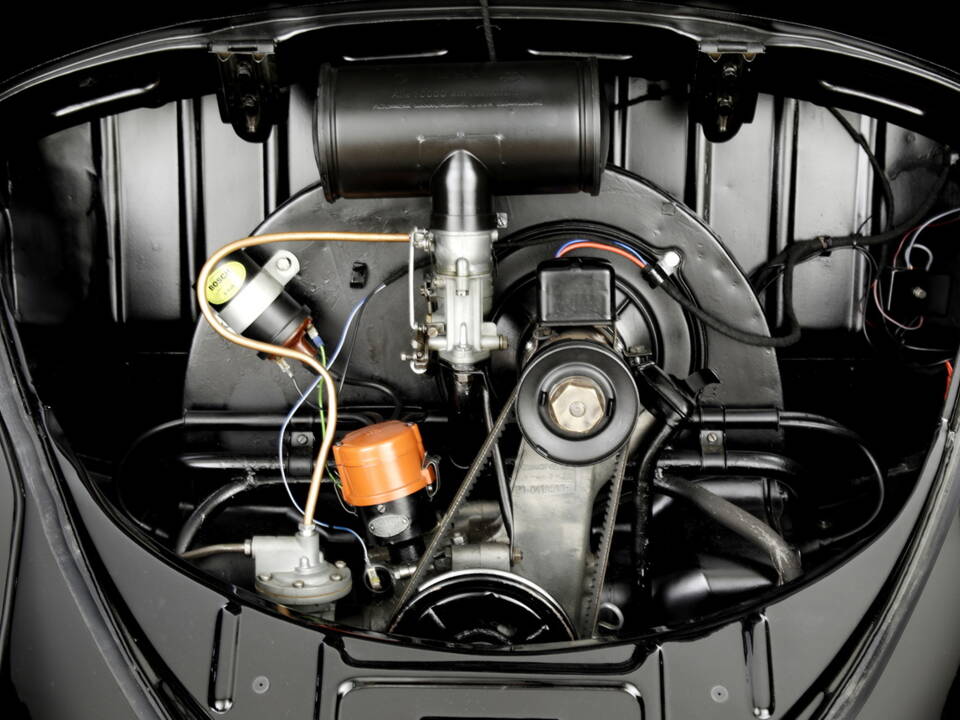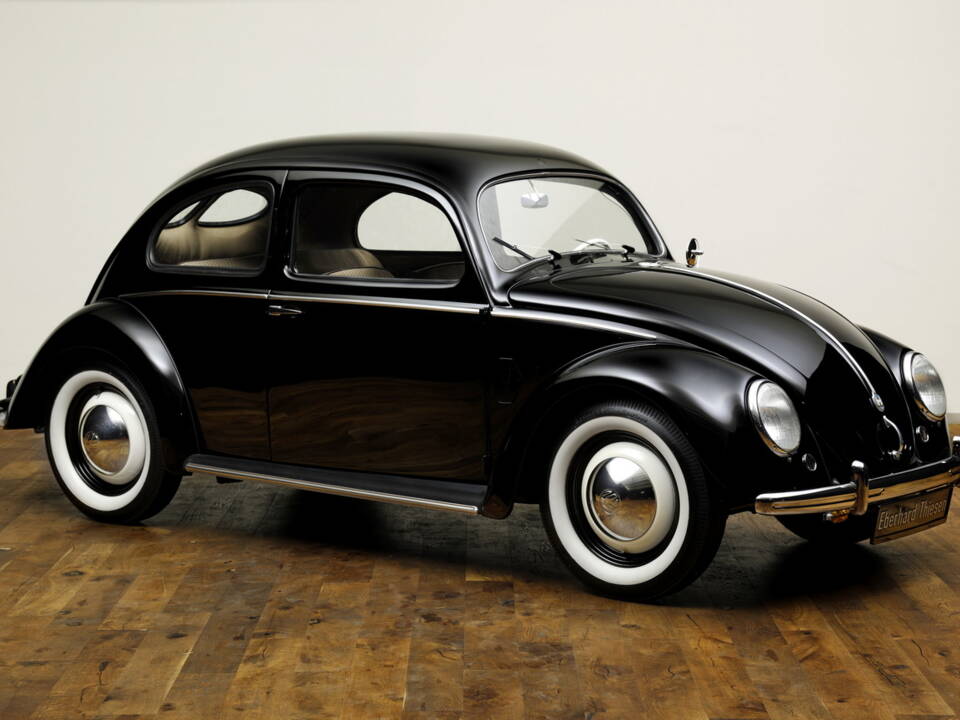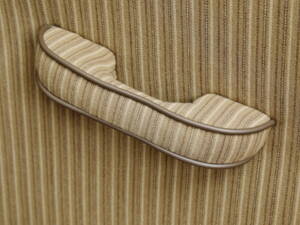1952 | Volkswagen Beetle 1100 Standard (Brezel)
All services for this vehicle
Description
- One of the last ‘Pretzel Beetles’ built in 1952 – the original pure version of the legendary Volkswagen
- Upscale export specification
- Rare version with the so-called ‘rheumatism flap’ for interior ventilation
- Highly original, comprehensively restored and ‘unmodified’
- Historic registration approval and TÜV reports available
The VW Beetle offered here was first registered in June 1952 and is therefore one of the last examples with the characteristic split ‘pretzel window’ at the rear. The car also has the ventilation flaps in front of the doors known as ‘Rheumaklappe’ (‘rheumatism flap’), which were only fitted for around one and a half years before the ventilation was taken over by hinged windows. At the time, the first owner ordered his car in the upscale ‘Export’ specification, which included different exterior colours, a partially synchronised gearbox and chrome-plated bumpers. The most important upgrade for drivability was probably the hydraulic brakes, whereas the standard model had cable-operated brakes. The car has brilliantly survived the 70 years since it was first registered, having been overhauled and restored in the meantime. It has been unaffected by well-intentioned modernisations such as the conversion to large rear lights or the welding in of a different rear window, as well as by ‘improvements’ in the course of later customisation. Particularly noteworthy is the light brown fabric interior in virtually new condition. This ‘Pretzel Beetle’ is a rare opportunity to own an important contemporary witness to German and worldwide automotive history and in particular to mass motorisation in Germany in the early 1950s. It would feel just as at home in a museum collection as it would on trips in today's road traffic. This car would also be well suited as a high-quality and uncomplicated classic for occasional ‘everyday use’.
Ferdinand Porsche developed the Volkswagen back in the 1930s on behalf of the government under the name ‘KdF-Wagen’, based on a concept by Béla Barényi. An early prototype, which already resembled the later design, was built by NSU in 1934 and designated the Porsche Type 32 after its developer. After initial road tests, the vehicle was further developed towards production maturity and finally declared ready for series production in 1938. A normal sale of the car was not planned; instead, interested parties could buy a savings booklet for one Reichsmark, which served as a purchase contract, and then gradually fill it with tokens. Zu Due to the outbreak of war, series production of the car was discontinued; from 1939, the newly built factory produced material for war requirements. At the end of the war, the ‘city of the KdF-Wagen’ became the city of Wolfsburg and the VW Type 1 was created in a modified form based on the original ‘KdF-Wagen’. Series production began in 1946, and the model was also exported from 1947. The engine was an air-cooled four-cylinder boxer with 1,133 cc and 24,5 hp. This cheap, simple and reliable motor car then became the origin of mass motorisation in Germany. The New York Times soon reported on the sales success in Germany and elsewhere, writing of cars that ‘crawled around like so many dazzling little Beetles’. And so the nickname was born, and a few years later Volkswagen itself began referring to the ‘VW Beetle’. To reduce costs, the early models had a two-part rear window until 1953, as this was significantly cheaper to manufacture than a curved window that matched the rear of the car. The appearance of the rounded windows with a centre bar earned the generation the nickname ‘pretzel beetle’, as the panes were said to resemble the large holes in a pretzel. In 2023, the German Federal Motor Transport Authority still counted over 55,000 Beetles on German roads. In addition to its recently acquired cult status, the car offers an unrivalled variety of versions and interpretations with or without a grip on foreign parts shelves. And even more than 70 years after production began, the Beetle has lost none of its unflagging reliability and can, if desired, be a faithful companion in everyday life.
Vehicle details
Vehicle data
- Make
- Volkswagen
- Model series
- Beetle
- Model name
- Beetle 1100 Standard (Brezel)
- Manufacturer code
- Typ 11
- First registration date
- Not provided
- Year of manufacture
- 1952
- Mileage (read)
- 81,447 km
- Chassis number
- Not provided
- Engine number
- Not provided
- Gearbox number
- Not provided
- Matching numbers
- No
- Number of owners
- Not provided
Technical details
- Body style
- Saloon (2-doors)
- Power (kW/hp)
- 18/25
- Cubic capacity (cm³)
- 1131
- Cylinders
- 4
- Doors
- 2
- Steering
- Left (LHD)
- Gearbox
- Manual
- Gears
- 4
- Transmission
- Rear
- Front brakes
- Drum
- Rear brakes
- Drum
- Fuel type
- Petrol
Individual configuration
- Exterior color
- Black
- Interior color
- Brown
- Interior material
- Textile
Condition, registration & documentation
- Has Report
- Condition
- Book inspection report
- Registered
- Ready to drive
- Mille Miglia eligible
Location
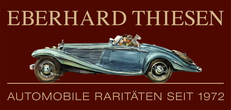
Eberhard Thiesen GmbH & Co. KG
Eberhard Thiesen
Tarpen 40 - Halle 12
22419 Hamburg
🇩🇪 Germany
